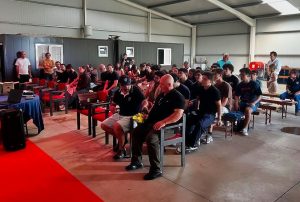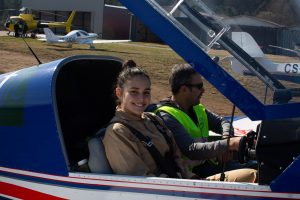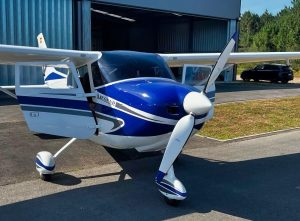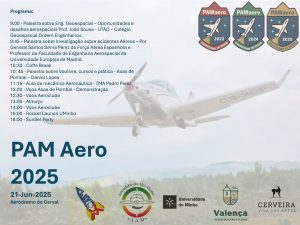They are linked to the second course with the best national average and, on Saturday, they will test aircraft in Cerveira
Around 90 students from the University of Minho’s Bachelor’s and Master’s degrees in Aerospace Engineering took their first flight on 21 June at the Alto Minho aerodrome (Cerval) in Vila Nova de Cerveira. The opportunity to tear through the clouds came at 12.30 and after 14.00. There were several ultralights in the hangar ready to fly over the banks of the River Minho, with the support of pilots and engineers.
In this Air Environment Adaptation Programme, the students give wings to their dreams and test what they have learned in theory on a practical level, sums up the director of both courses, Gustavo Dias. The students, most of whom are in their first year, also interacted with aerodrome professionals on projects being carried out in class. For example, in the degree course – which has the second highest minimum entry mark in the country (19.14) – one of the subjects required them to create a glider out of end-of-life materials in 2024 in partnership with local companies, as well as applying notions of mechanics and electronics.
Mini-rockets launched with CCDR-N president and mayors
This year, they had to build a 1.5 metre mini-rocket with a flight time of up to five minutes and a parachute landing. The class split into six groups and their six small rockets were launched on Saturday at 4pm in Cerval in the presence of the president of the Northern Regional Coordination and Development Commission, António Cunha, the Cerveira Municipality, Rui Teixeira, the Valença Municipality, José Manuel Carpinteira, and the UMinho School of Engineering, Pedro Arezes.
A sunset party rounded off the school year and a long day. The students’ agenda at the aerodrome that morning also included workshops on geospatial engineering, accident management, mechanics and free flight demonstrations. The speakers were Professor João Sousa (Geospatial College of the Order of Engineers), General Santos Senra Pérez (Spanish Air Force), pilot Daniel Lopes (Asas de Pombal) and expert Pedro Perez (TMA).
Historic site
The initiative has the support of UMinho’s Aerospace Engineering Student Centre and the Aeroclube do Alto Minho, which signed a protocol for joint projects with UMinho in 2023. The municipalities of Cerveira and Valença have also shown interest in investing in the construction of a local hangar for UMinho research.
The Cerval aerodrome is considered one of the most important on the Iberian Peninsula, with around sixty aircraft registered. It is also of historical interest, as in 1933 US aviation pioneer Charles Lindbergh ran out of fuel in his Lockheed seaplane and made a forced mooring on the River Minho, in Friestas, Valença, which was thus publicised in the world press. In 1997, a monument was erected on the site.
SOURCE: https://www.uminho.pt/PT/siga-a-uminho/Paginas/Detalhe-do-evento.aspx?Codigo=66356







